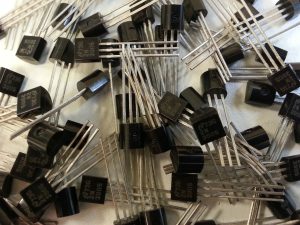Piezoelectric Circuits: Motion-Powered Electronics
Piezoelectric circuits are revolutionizing the way we power and use electronics. These circuits utilize the piezoelectric effect, which converts mechanical energy into electrical energy, to power our devices. This technology is gaining popularity due to its ability to provide a sustainable and renewable source of energy for various applications. In this article, we will delve deep into the world of piezoelectric circuits and their many uses in motion-powered electronics.
What are Piezoelectric Circuits?
The term ‘piezoelectric’ originates from the Greek word ‘piezein’ which means to press or squeeze. This concept was first discovered in the 18th century by brothers Pierre and Jacques Curie when they observed the piezoelectric effect in certain crystals. This effect occurs when pressure or mechanical stress is applied to certain materials, causing them to generate an electrical charge. The inverse is also true, where electrical fields can cause mechanical deformations in these materials, known as the inverse piezoelectric effect.
Piezoelectric circuits consist of piezoelectric materials, such as crystals or ceramics, and electronic components such as transistors and resistors. The piezoelectric material acts as a mechanical energy harvester, converting vibrations or movements into electrical energy. This energy is then amplified and regulated through the electronic components to power electronic devices.
How do Piezoelectric Circuits Work?
Piezoelectric circuits use a phenomenon known as the direct piezoelectric effect to produce electrical energy. This effect is caused by the repositioning of atoms within the crystal or ceramic material when stress is applied to it. This creates a separation of positive and negative charges, resulting in an electrical potential. This potential can then be harnessed and used to power electronic devices.
Piezoelectric circuits usually consist of two main components – a piezoelectric material and an electrical circuit. The piezoelectric material is typically placed in areas where there is a high likelihood of mechanical stress or vibration, such as in shoes or car tires. As these materials experience movement, they generate an electrical charge which is then sent to the electrical circuit. This circuit amplifies and regulates the charge to match the voltage or current requirements of the specific electronic device.
Applications of Piezoelectric Circuits in Motion-Powered Electronics
Piezoelectric circuits have a variety of applications in motion-powered electronics. One of the most well-known uses is in piezoelectric shoes, where the energy generated by walking or running is converted into electricity and used to power devices such as GPS trackers or health trackers.
Another common use is in piezoelectric floor tiles, where the pressure from foot traffic can be converted into electricity and used to power lighting in public places. This technology is also being incorporated into roads and highways, where the constant movement of vehicles can generate electricity to power streetlights or traffic signals.
In addition, piezoelectric circuits are being used in sports equipment such as tennis rackets and golf clubs to harvest kinetic energy and charge electronic devices, such as smartphones, while playing. This eliminates the need for external chargers and provides a sustainable source of energy.
Advantages of Piezoelectric Circuits for Motion-Powered Electronics
One of the biggest advantages of piezoelectric circuits is their sustainability and renewable nature. These circuits can continuously generate electricity as long as there is movement or mechanical stress applied to the piezoelectric material. This makes them ideal for powering electronic devices in remote or off-grid areas, reducing the reliance on traditional energy sources.
Another advantage is their size and durability. Piezoelectric circuits can be designed to be very small, making them perfect for use in wearable devices or small gadgets. They are also highly resistant to shock and vibrations, making them a reliable source of energy in harsh environments.
Conclusion
Piezoelectric circuits have opened up a world of possibilities in motion-powered electronics. These circuits offer a sustainable and renewable source of energy that can be used in a variety of applications. With ongoing research and advancements in this field, it is safe to say that we will see even more innovative uses of piezoelectric circuits in the near future.
Disclaimer: This article is for informational purposes only and should not be used as a substitute for professional advice. Always consult a qualified engineer or technician for guidance on piezoelectric circuit design and implementation.









